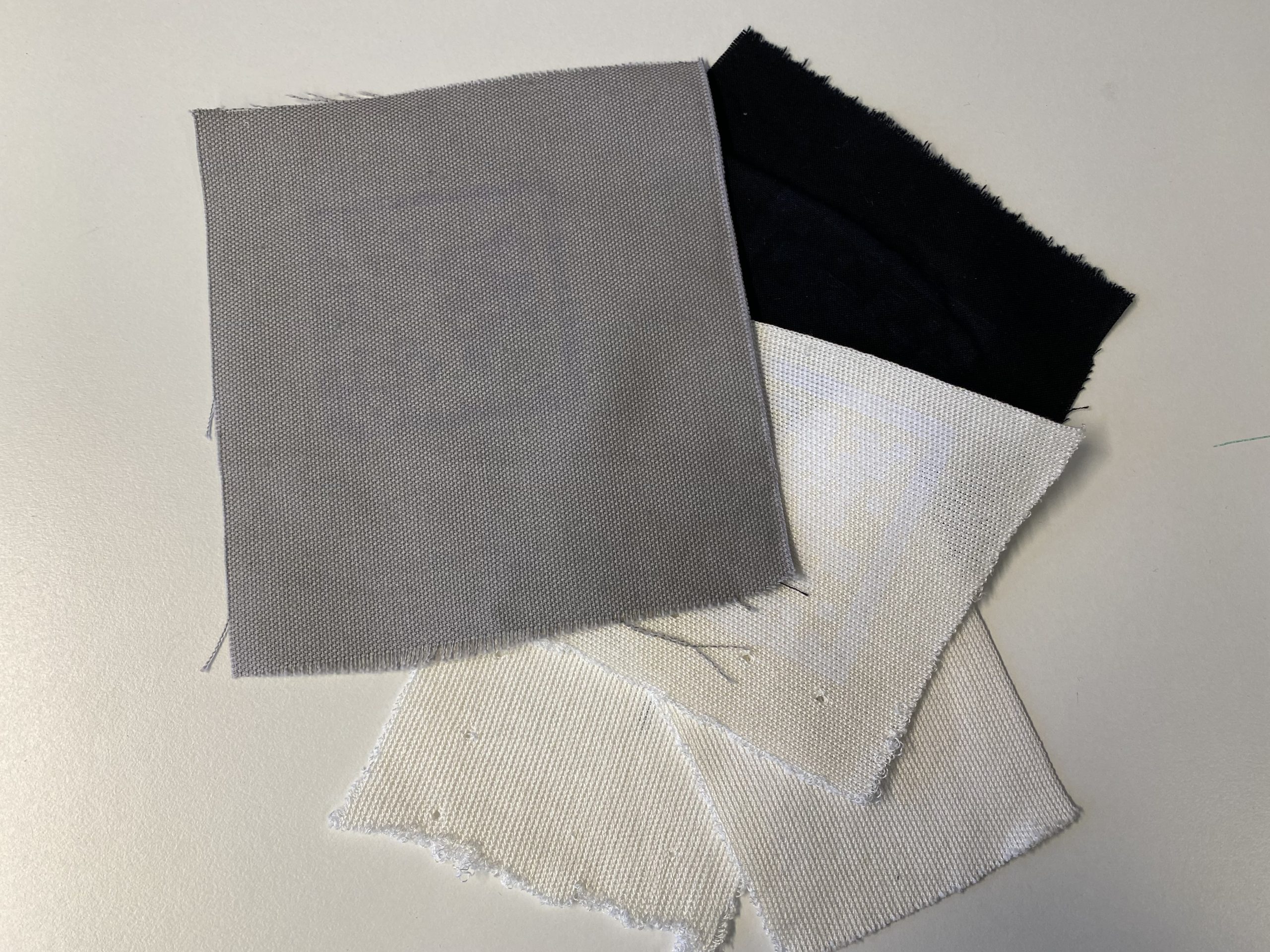Picture Sini Suomalainen: Printing QR codes to different textile materials is researched as a part of FINIX project.
Text Elina Lewe
The Digital Product Passport (DPP) for the textile sector is part of the objectives of the EU strategy for sustainable and circular textiles and is introduced through the proposed Ecodesign for sustainable products regulation (ESPR). Only product groups introduced through the ESPR will be required to have a DPP.
A Digital Product Passport is a system used to store and share relevant information throughout a product’s lifecycle. The access to information is free of charge and electronically accessible through a data carrier, such as a QR code, a NFC chip or an RFID tag. The economic operator placing the product on the market will be responsible for making the information available.
The DPP can lead to a better understanding of the product for industry stakeholders, businesses, public authorities and consumers regarding the materials used and its environmental impact. It can also help secure supplies of critical primary and secondary materials due to the data on its availability.
The final ESPR, which is set to be published in 2024, will include the information requirements of the DPP for several product groups. Examples of information requirements that might be included in the DPP are: master data, like product, manufacturer, composition, substances of concern, toxicity, sourcing; new data, like use, modification, maintenance, disassembly possibilities; and voluntary product information, like recycled content, and product or carbon footprints in complex supply chains.
Since the European Commission is currently considering introducing the DPP as part of a decentralized approach for the textile industry, there are already some frontrunners developing DPP concepts. Private companies like TrueTwins, EON, Niaga, Circular.Fashion or AURA Blockchain have created and successfully piloted DPP concepts for textiles. Their partners include, for example, H&M, Zalando, or Prada.
The Textile and Fashion Association in Finland has also published a concept on a DPP for textiles with recommendations in regards to the data architecture and implementation process. You can read the full report here.
Traceability platform providers are becoming more and more popular, especially since the plan for a DPP for textiles has been mentioned by the European Commission. Until now paper-based and incomplete data systems are used in textile supply chains. Traceability softwares help brands to prepare all necessary data along the value chain, which might soon be mandatory to link to individual products, and to get a better overview of their suppliers. Traceability platforms that are already active in the textile industry are i.e. TrusTrace, ReCircE, Textile Genesis, Sourcemap, Circularise, or FibreTrace.
At the moment, the textile industry does not follow any data standards for this type of data. Data standards describe how data should be stored or exchanged in order to make it consistent and interoperable. GS1 and ISO are currently in the process of developing data standards for the DPP. Standards that are already active and have been developed by private organizations for their own DPP system are the Circularity.id by Circular.Fashion and the Circular Product Data Protocol by EON.
Open questions and challenges related to the DPP
Several aspects of the DPP are still unclear or might create challenges for different stakeholders. Here are some questions that still need to be answered by the European Commission:
How will the storage of data for the DPPs be managed? Who manages the publicly mandated DPP systems and how will they do so?
The topic of transparency of information needs to be addressed. How will business confidentiality be maintained when the DPP requires businesses to release all relevant information along their value chain? This also concerns intellectual property rights protection and competitive advantage on the market.
A DPP for complex products consisting of many different components could be a challenge. In regards to packaging however, the European Commission has made it clear that packaging as an independent product will not be included in the ESPR working plan but will rather be approached as a component of a product placed on the market.
How will partners outside the EU fit into the equation? Will tier 2 factories be required to share their data to businesses placing textile products on the EU market? How will the data be verified?
In order to make the DPPs in Europe interoperable, even when choosing a decentralized approach, there is a need for consistent data formats, calculation principles, and definitions laid down by the European Commission.
In order to answer some of these questions and respond to the challenges, the European Commission has started to fund the CIRPASS project. CIRPASS stands for “Collaborative Initiative for Standards-based Digital Product Passport for Stakeholder-Specific Sharing of Product Data for a Circular Economy”. It involves 30 stakeholders and experts in the field for a DPP in three industries: electronics, batteries and textiles. These partners will work together to work out a foundation of the DPP based on common rules, principles, taxonomy and standards and will come up with a total of three DPP prototypes, one for each sector. Another outcome of the project is to provide recommendations for data exchange protocol and system architecture, so that the DPP will be standardized and machine-readable.
If this project is successful, there will hopefully be answers to the questions above that will make the DPP for textiles concept clearer to everyone that would be affected by it. However, it has been estimated that a successful implementation of the Digital Product Passport will take at least another 5 years.
Sources:
Cura, K. & Sheenman, J. & Niinimäki, K. (2022). Transparency and traceability in the textile value chain. Aalto University, School of Arts, Design and Architecture. https://aaltodoc.aalto.fi/bitstream/handle/123456789/117564/isbn9789526496238.pdf?sequence=1&isAllowed=y.
DIGITALEUROPE. (October 5, 2022). DIGITALEUROPE joins CIRPASS to lay the ground for the deployment of European Digital Product Passports. https://www.digitaleurope.org/news/digitaleurope-joins-cirpass-to-lay-the-ground-for-the-deployment-of-european-digital-product-passports/.
ECESP Circular Economy. (July 13, 2022). #EUCircularTalks: EU Digital Product Passport – learning from frontrunners [Video]. Youtube. https://www.youtube.com/watch?v=oQJL-QlWxZI.
European Commission. (March 30, 2022). Proposal for a Regulation of the European Parliament and of the council establishing a framework for setting ecodesign requirements for sustainable products and repealing Directive 2009/125/EC. https://environment.ec.europa.eu/document/download/11246a52-4be4-4266-95b1-a15dbf145f51_en?filename=COM_2022_142_1_EN_ACT_part1_v6.pdf.
Simon, F. (October 6, 2022). EU’s upcoming ‘digital product passport’ will include packaging, official says. EURACTIV. Retrieved November 7, 2022, from https://www.euractiv.com/section/energy-environment/news/eus-upcoming-digital-product-passport-will-also-include-packaging-official-says/.
STJM. (October 4, 2022). Digital Product Passport. https://www.stjm.fi/wp-content/uploads/2022/10/Digital-Product-Passport-A4-v010.pdf.
University of Cambridge Institute for Sustainability Leadership (CISL) and the Wuppertal Institute. (2022). Digital Product Passport: the ticket to achieving a climate neutral and circular European economy? Cambridge, UK: CLG Europe.

